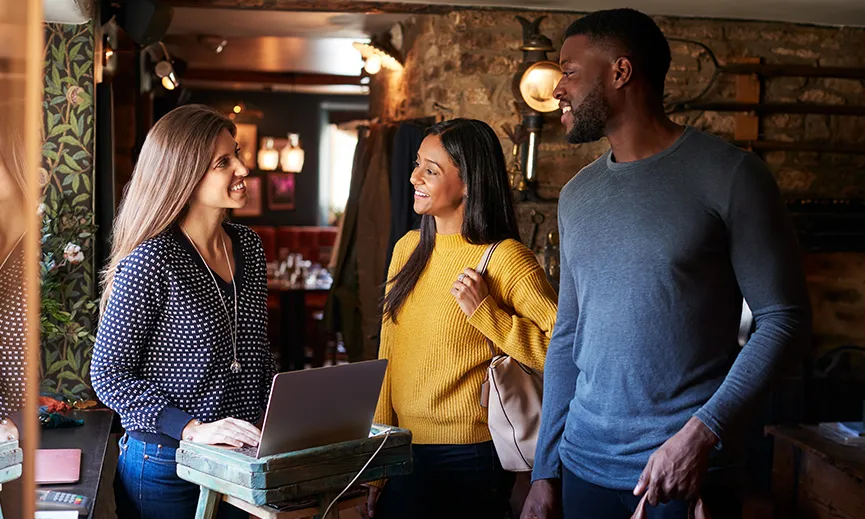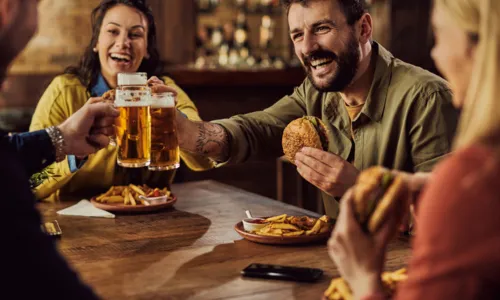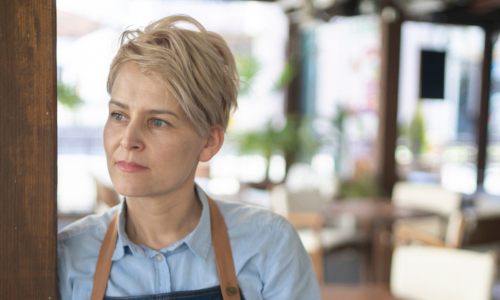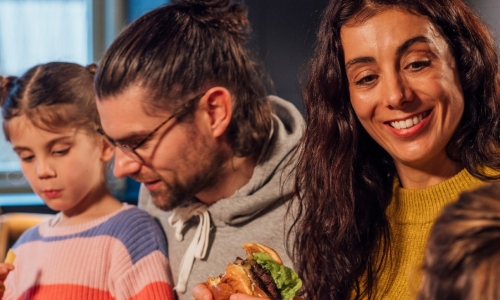
GO Technology: Why 6:12pm is the new 8pm
One of the key factors in building customer advocacy, driving visit frequency, and improving the effectiveness of your loyalty offering, is getting your comms right.
Nearly three-quarters of consumers (73%) are happy to be contacted by their favourite restaurants, pubs, and bars, which is great news for operators looking to engage and build a relationship with their customers. But what do they want to hear about and how do they want to be contacted?
Perhaps predictably, saving money is the most popular reason for a customer to want to be contacted but there is other information that floats their boat too, including new menu items and events.
What do you want to hear about from your favourite pubs, bars and restaurants?
In terms of reaching customers, email remains the most popular channel, with 47% of people indicating they want hospitality brands to contact them this way, followed by social media and text (17% for both), WhatsApp (15%) and apps (14%).
Whichever channel – or channels – operators are using, it’s important to get the frequency right if it is to stand a chance of engaging customers rather than turning them off. Our research shows that 36% of people expressed a preference to be contacted monthly, for example, compared to just 30% who said they want to hear from their favourite venues at least once a week.
A database of consumers offers operators opportunities beyond promoting a meal deal or an event, however. By engaging in this way, customers are allowing you access to their data, which if used properly, can unlock sales growth, improve customers experiences, drive footfall and boost loyalty.
Taking the time to analyse data will help operators make more informed decisions and reduce friction points as it will shine a light on emerging consumer trends and customer preferences. If used properly, the insight contained in customer data can also help deliver more personalised offers and experiences – as flagged previously, this is something our research shows consumers increasingly want from hospitality brands.
Understand what it is you want to achieve with your communications and tailor your messaging accordingly. Are you looking to build loyalty? Or increase visit frequency? We’ve established that consumers want to hear from their favourite hospitality businesses on a number of topics – and it’s not just simple discounts. Keeping your customers updated with variety of comms that showcase what makes your venue special, whether it’s new additions to your menu or an exciting new event, are great ways of keeping your customers engaged with your brand and enticing them back in beyond their usual visits.
Use the right channels at the right frequency. Consumers receive high volumes of communications, making it vital for you to match what, when, and how you’re sending your marketing to their preferences to cut through the noise. Email remains the top preference for the way consumers want to be contacted, and monthly comms – followed closely by a weekly update – rank highest in terms of frequency. Keep your comms regular, but avoid overloading.
Personalisation is key. It’s not surprising that value-driven communications are the most popular, with 54% of guests wanting to hear from hospitality businesses about deals and rewards. However to achieve the highest potential of these deals and offers resulting in a visit, they should be personalised. Ensuring you’re taking the time to analyse your customer data to understand who your customers are, and what aspects of your offering they’re most engaged with, will help you deliver more effective marketing campaigns that result in more visits.
Dining out with friends or colleagues often involves splitting the bill – a common practice that can vary based on the group’s preferences. Some may opt to divide the total bill equally, while others prefer instead to pay only for the items they ordered. As more hospitality operators adopt loyalty programs, vouchers, and gift cards, the operational complexity of splitting a bill has increased significantly over the years.
To help you understand how technology can help streamline and simplify this process, as well as provide an enhanced customer experience, Zonal’s Customer Success team explore some of the ways our technology can facilitate the process of splitting the bill.
Splitting the bill
When processing a payment on the POS, there are 3 primary methods for splitting a bill on an open account:
Even Split: divide the total equally among all parties.
Itemised Split: splitting the account by individual items.
Visual Split: allocate items based on items consumed.
The table below outlines each method, provides example scenarios, and highlights key considerations to keep in mind.
| Even Split | Visual Split | Split Account | |
|---|---|---|---|
| Description | Creates multiple bills by splitting the total amount due on the account evenly by a defined number.
The Aztec Account remains as one. |
Creates multiple bills by allocating products to individual bills as well as allowing 1 product to be split between multiple bills.
The Aztec Account remains as one. |
Splits an EPoS Account into individual accounts for each guest by moving products. This allows guests to pay for what they consumed.
A product can only be part of 1 account. The original table number remains on the first account, new account(s) use the table number followed by an alpha character. E.g. Table 1, 1A, 1B, etc. |
| Example Use Case | 3 guests order food and a bottle of wine. Each wants to pay the same amount and split the bill evenly. | 3 guests order food and 2 of the guests share a bottle of wine. Each wants to pay for the food they ordered, the bottle of wine is to be split between only 2 of the guests. | 3 guests order food and a drink each. Each wants to pay for their own food and own drink. Each guest will get their own copy of a bill. |
| Be Aware | Each guest pays the same. | This can be complex to reverse should a refund be needed, or reverting back to beginning state. Be sure to test and have your processes defined so that your teams are confident. | Doesn’t allow a product to be split between accounts. |
Now that we’ve covered the three primary ways for splitting a bill, its important to consider how additional systems like loyalty cards, rewards, vouchers, promotions, discounts and deposits can impact the process.
The table below outlines how the split bill functionality within Zonal’s POS operates when these systems have already been applied to the Aztec account, detailing how each scenario is managed during the split.
| Loyalty Rewards | Even Split | Visual Split | Split Account |
|---|---|---|---|
| Loyalty Card | The same loyalty card remains on all bills. You will be unable to remove loyalty cards or assign a new card whilst in split bill mode. Ultimately, whichever guest made the booking, or applied their loyalty card first gets the reward. | The same loyalty card remains on all bills. You have the ability to remove and add a new loyalty card. However, that one loyalty card is applied to all bills. There is no ability to add different loyalty cards to each bill. | The same loyalty card remains on all bills (accounts). In this instance however, you will have the ability to remove and add a different Loyalty card to each bill. |
| Loyalty Rewards | Loyalty rewards (promotions and/or discounts) will remain for each split and the price reduction is applied to all bills. | Loyalty rewards remain but cannot be moved from Bill 1. To apply promotions, you will need to ensure the promotional products remain on Bill 1. If the Loyalty reward is a discount, you will be unable to use visual split. | If the loyalty reward is a discount, you will be unable to split the account. Loyalty rewards remain but cannot be moved from first account (or Table). For promotions to apply, you will need to ensure the products that are part of the promotion remain on the first account (i.e., Table 1, NOT table 1A, or 1B etc). |
| Voucher Code | Voucher Codes (promotions and/or discounts) will remain and the price reduction is applied to all bills. | The item Voucher remains but cannot be moved from Bill 1. To apply promotions, you will need to ensure the promotional products remain on Bill 1. If a voucher code is a discount, you will be unable to use visual split. | The Voucher item remains but cannot be moved from the first account (or Table). For promotions to apply, you will need to ensure the products that are part of the promotion remain on the first account (i.e., Table 1, NOT table 1A, or 1B etc). If a voucher code is a discount, you will be unable to split accounts. |
| Promotion | The promotion remains and the price reduction is applied to all bills. | You will be able to use visual split. Promotions will still apply, providing all products in the promotion rule are within a single bill. | You will be able to split account. Promotions will still apply, providing all products in the promotion rule are within a single account. |
| Discount | The discount remains and the price reduction is applied to all bills. | Visual split cannot be used when a discount is applied. | An account cannot be split when a discount is applied. |
| Deposit | The deposit is applied and split between bills evenly. | The deposit remains on Bill 1 and cannot be split between bills. | An account cannot be split when a deposit is already on the Aztec account. Deposits can be partially or fully redeemed to the accounts after the account is split. |
Definitions
We know too well that terminology can often be confusing, so to help with the above tables, we’ve listed some definitions.

GO Technology: Why 6:12pm is the new 8pm

Pub Accommodation Review 2025

GO Technology: Hotels and consumers – Guest expectations and how to meet them

GO Technology: Consumers and hospitality: 2024 in review

GO Technology: The truth behind no-shows

GO Technology: Brand loyalty in hospitality

GO Technology: Fixing people’s hospitality bugbears

GO Technology: The value of hospitality – Exploring consumer insights and perceptions

Influence, loyalty and technology: Key guest trends from 2023
Built for ease of use, iServe Plus empowers staff members to efficiently take
orders and payments from any location within your venue, enhancing speed of
service, accelerating order processing, and facilitating quicker table turns. By
minimising staff visits to the bar and kitchen, iServe Plus allows your team to
focus more on delivering exceptional customer experiences.
Built for ease of use, iServe Plus empowers staff members to efficiently take
orders and payments from any location within your venue, enhancing speed of
service, accelerating order processing, and facilitating quicker table turns. By
minimising staff visits to the bar and kitchen, iServe Plus allows your team to
focus more on delivering exceptional customer experiences
iServe is Zonal’s handheld ordering solution for hospitality staff, helping to save
time, eliminate errors, and provide speedier service by allowing you and your
team to take orders digitally and send them directly through to the kitchen or
bar without needing to re-key the order at a fixed terminal.
Fully integrated with Zonal’s digital ordering management platform, our kiosk
integration provides you with a flexible solution to help reduce queues, speed
up service, and meet guests’ demands for convenience with quick and easy
ordering journeys. Available through select hardware partners.
Part of the Zonal family, Airship is a powerful CRM, purpose-built for
hospitality. Centralise your customer data, build a better picture of who your
customers are and how they interact with your business, and deliver targeted,
more effective marketing campaigns that drive revenue.
Consolidate your business intelligence into one single view. Dimensions+ is Zonal’s suite of additional reporting tools, enabling you to combine various data sources, such as accounting, payroll, and customer feedback, within one platform to create bespoke views and dashboards. Requires a Power BI Pro license.
Zonal Delivery is our cost-effective and user-friendly platform for managing
delivery service providers, offering seamless integrations with the three
major online ordering and delivery services, and simplifying multi-channel
and multi-unit menu management. Easily manage your online deliveries
and streamline your operations, making it an ideal solution for efficient and
hassle-free order handling.
Available as both a fully branded app and web ordering platform, Zonal’s
Order & Pay solution allows you to offer increased convenience and
flexibility for guests, whilst increasing spend-per-head and saving staff
time. Tight integration with our EPoS eliminates the need for your team to
spend time re-keying orders, or updating product availability when items go
out of stock, eliminating additional operational overhead.